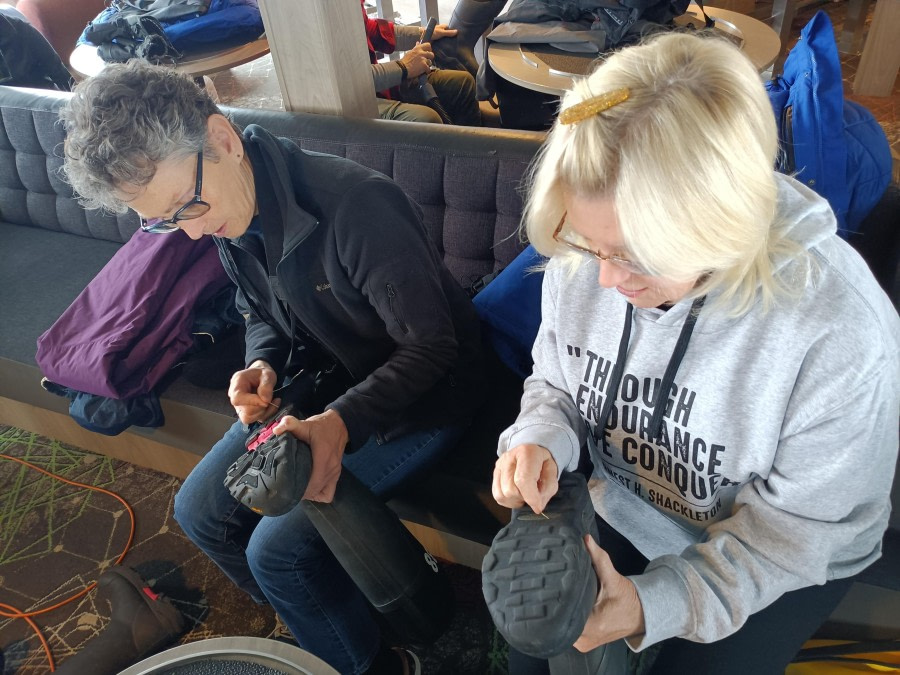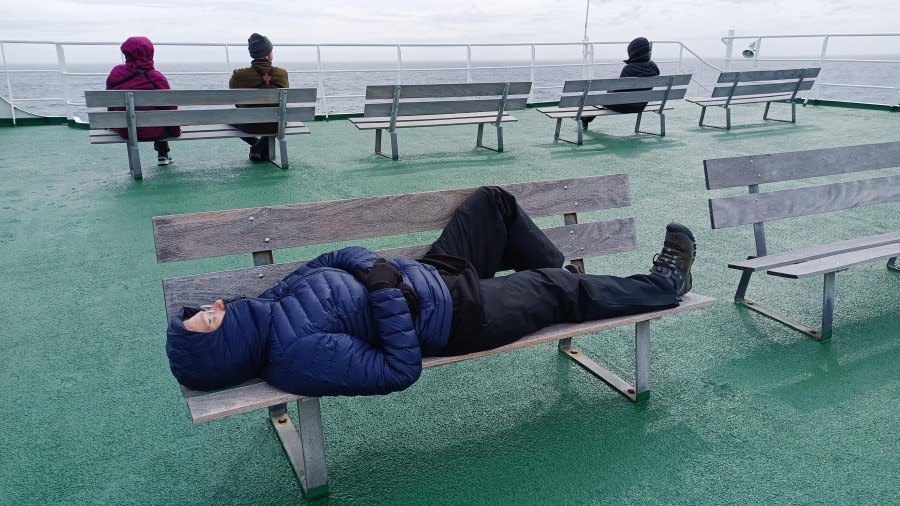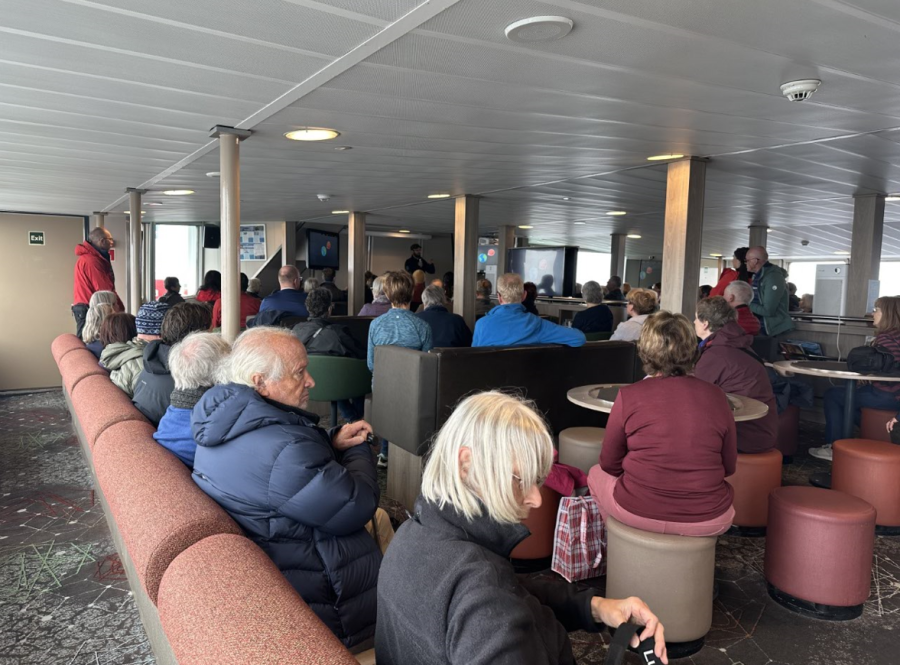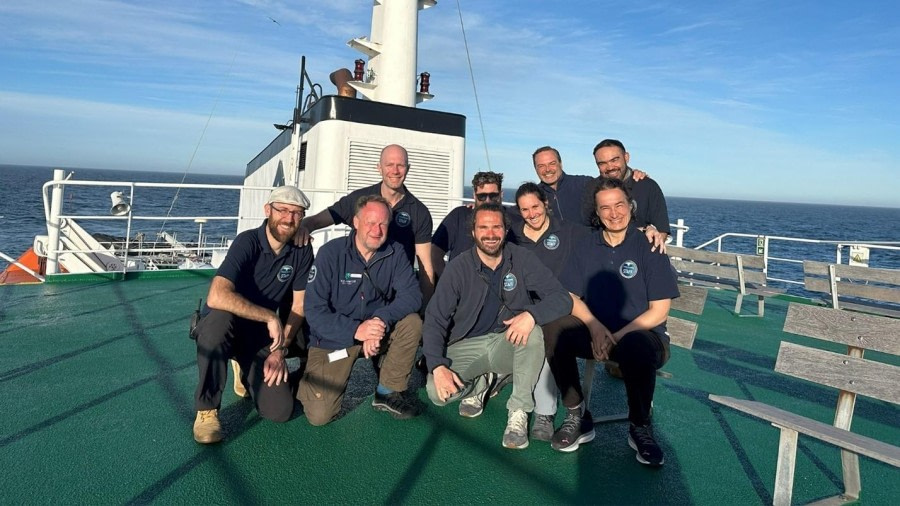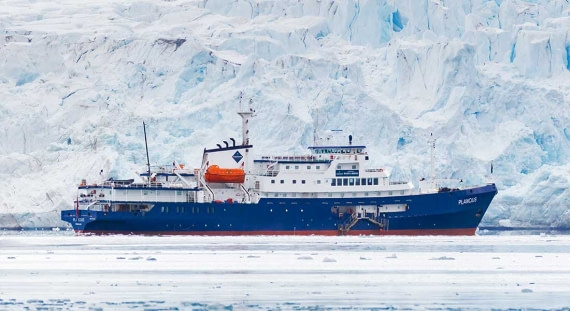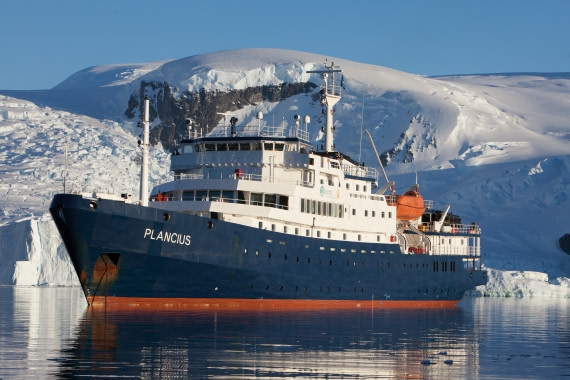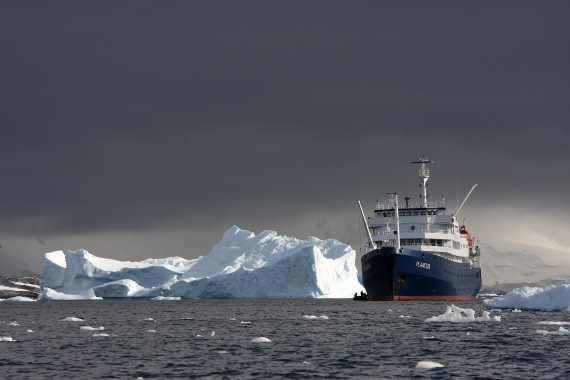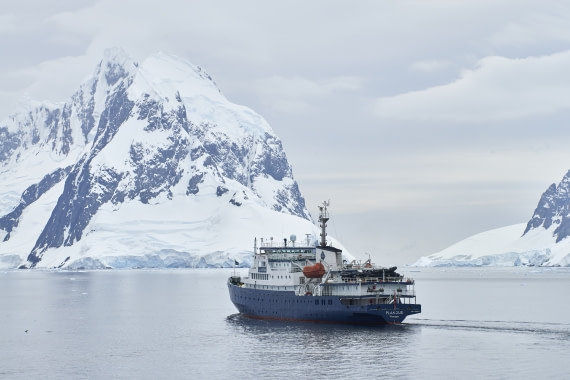| Datum: | 16.01.2024 |
| Positie: | 54° 48.6’S / 66° 54.0’W |
| Wind: | E-2 |
| Weer: | overcast |
| Luchttemperatuur: | +6 |
Finally the day had arrived, and our expedition to Antarctica was about to begin! We found ourselves in Ushuaia, in the most southern part of Argentina, also called the end of the world. During our expedition, we would go even farther south.
We were not expected to embark Plancius until 16:00. That gave us time to recover from the long journey south and explore the town of Ushuaia. This small town offers a lot of coffee and cake cafes as well as many outdoor shops. Ushuaia makes for a cozy town and is ideal for buying last-minute items like hats, gloves, or another layer to keep warm.
At 16:00 it was time to make our way up the gangway of Plancius. We were greeted at the dock by members of the expedition team, and the hotel manager quickly checked us in. There was not a lot of time to relax, as at 17:15 a mandatory safety drill was scheduled, so our presence in the lounge was required. We were welcomed by expedition leader Eduardo, and the chief officer guided us through a safety video and drill procedure. Then we all sat in the lounge, wearing our bulky orange life vests. When we heard the abandon ship alarm, we made our way outside to the lifeboats where the second officer informed us further.
With the mandatory drill done, it was time to release the ropes, start the engines, and leave the port of Ushuaia behind. The captain came down to the lounge and greeted us with a glass of champagne, speaking some warm words of welcome. Eduardo then gave us more information about the program for the days ahead.
Soon it was time for dinner. The galley team had prepared a delicious buffet, and the dining room was buzzing with excitement. The members of the expedition team also joined for dinner, and this offered a first opportunity to get to know each other. After a long and intense day, it was time for a good rest. Some of us decided to spend some time on the deck to enjoy the beautiful golden light. The next 19 days, we will see each other a lot! When sailing through the Beagle Channel, we encountered several Fin Whales and Dolphins, a great start to the trip.
